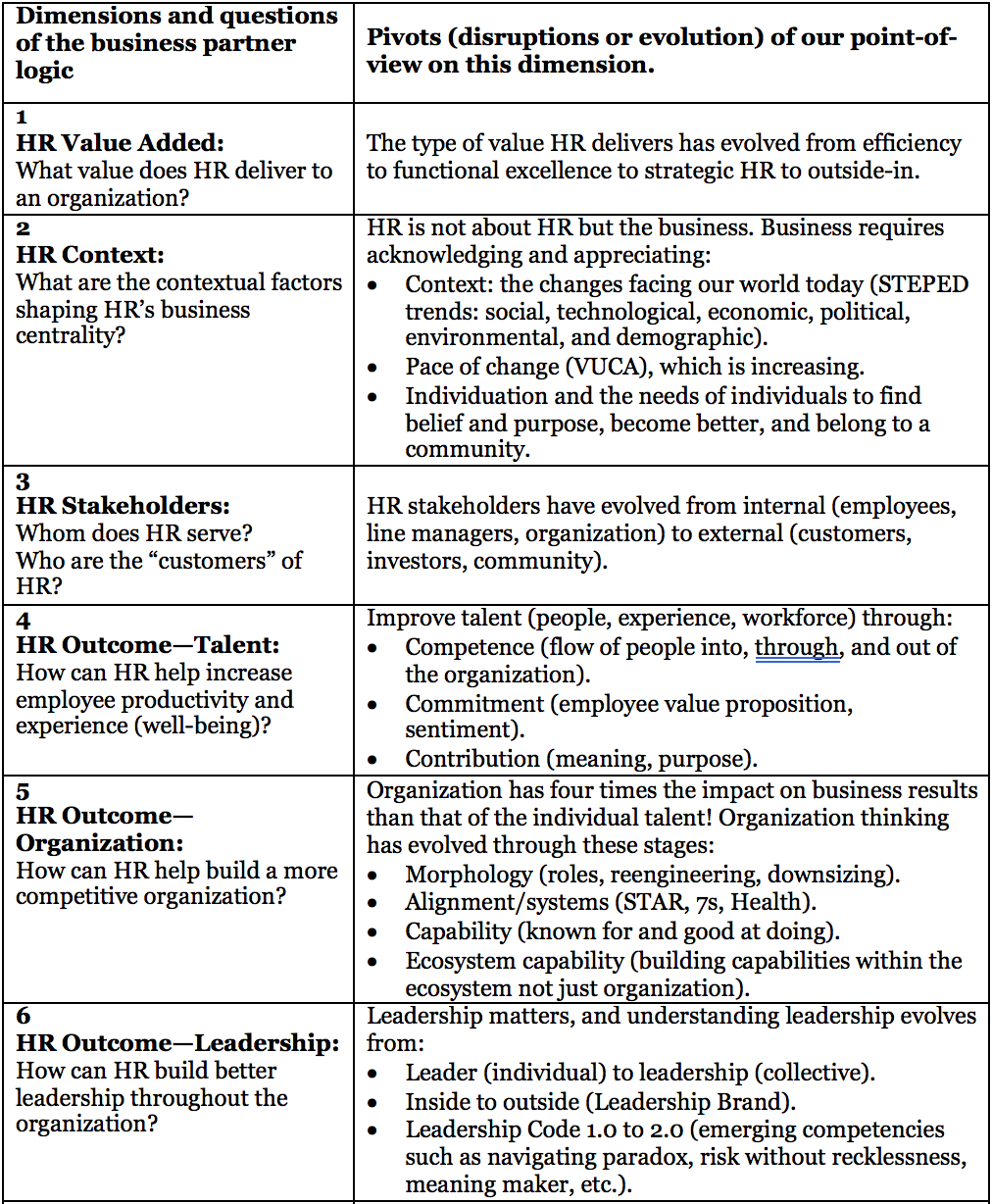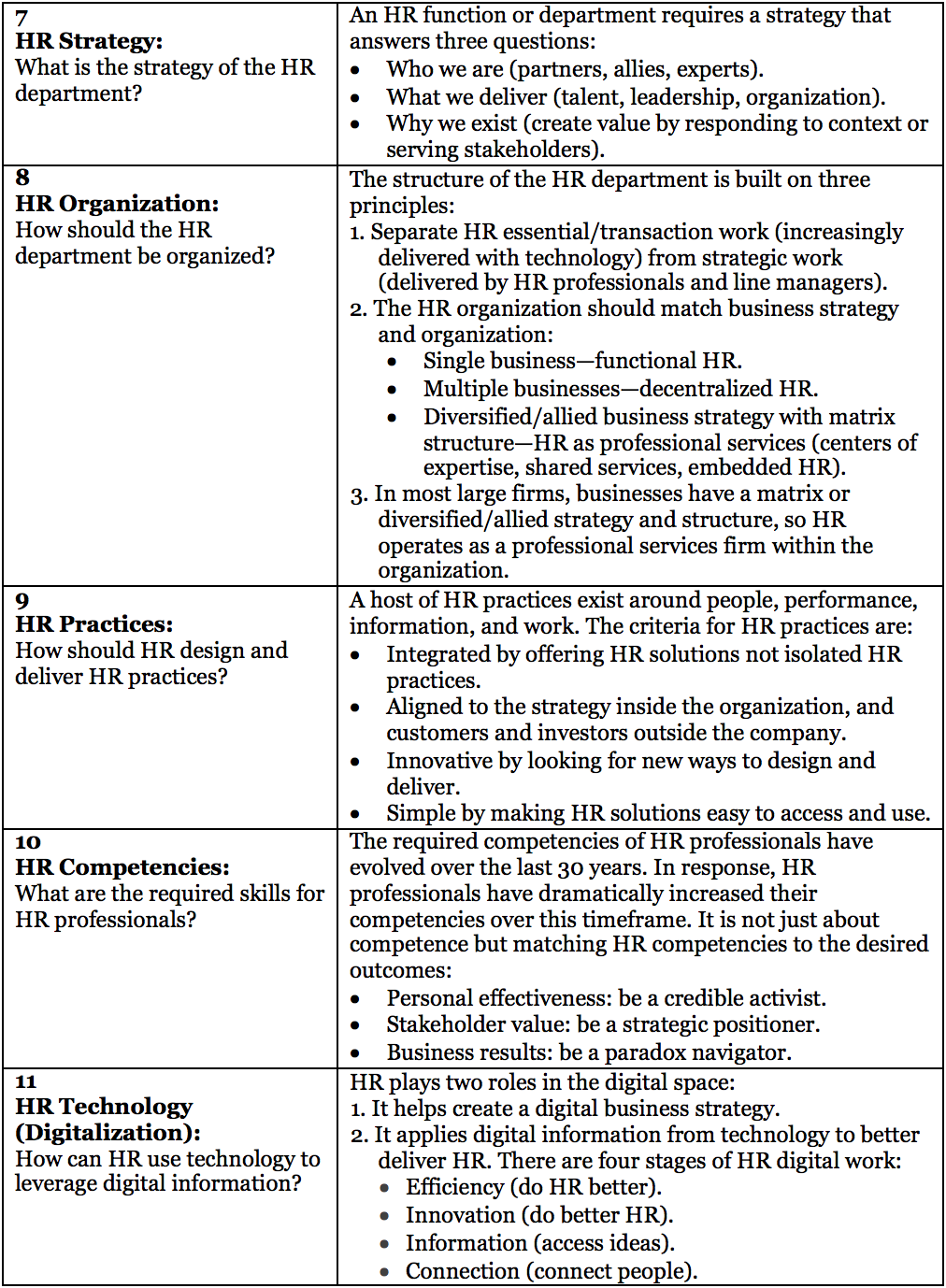Human Resources Business Partner 2.0
The business partner concept has dramatically evolved from roles and outcomes to a logic of how HR delivers value to employees, organizations, customers, investors, and communities through individual talent leadership throughout an organization, and organization capabilities. HR’s evolution will continue as current business issues place HR center stage (e.g., digital information age, #MeToo movement) and HR needs to continually upgrade to respond; but it is useful to move at this time from business partner 1.0 to business partner 2.0.

Human Resources Business Partner 2.0

In 1997, Netscape was the browser of choice; Motorola StarTAC dominated cell phone popularity; the Apple PowerBook led in innovative laptops; cordless home phones emerged; Sony PlayStation with a 128k memory card was state of the art; Windows 95 was released. And I published the book Human Resource Champions, the ideas therein helped to define the HR business partner in terms of roles and outcomes within an organization.
In the ensuing 20+ years, much has changed in the world of technology; and much has changed in the world of HR. The business partner concept has dramatically evolved (transformed, been disrupted, evolved, or whatever word you choose) from roles and outcomes to a logic of how HR delivers value to employees, organizations, customers, investors, and communities through individual talent (competence, workforce, people), leadership throughout an organization, and organization capabilities (culture, workplace, systems). In these 20 years, my colleagues and I have published over 25 books and hundreds of articles, chapters, research monographs, and blogs, and have given hundreds of talks on how HR is not about HR but about delivering value to multiple stakeholders.
Often critics of HR compare the 1997 HR business partner 1.0 model with the 2019 business requirements, assuming that HR logic and ideas have not evolved. This would be like saying the StarTAC phone should perform the functions of today’s smartphones. So it is useful to capture the concepts defining business partner 2.0. It is difficult, if not impossible, to summarize all the business partner 2.0 ideas, but the following table highlights thirteen pivots (because they build on the past, but they could be called disruptions or evolutions as well) each of which has been the focus of our (and many others’) thinking, research, writing, and practice.
We are incredibly grateful for HR professionals and thought leaders whose work we so readily assimilate, learn from, and build upon. The ongoing evolution of HR to a true value-creation stage comes from so many innovators. We appreciate their work and are grateful to be part of the HR value-creation movement.
HR’s evolution will continue as current business issues place HR center stage (e.g., digital information age, #MeToo movement) and HR needs to continually upgrade to respond; but it is useful to move at this time from business partner 1.0 to business partner 2.0. I should note that each of these thirteen dimensions is the topic of a book, article, webinar, or other public data that is readily accessible on our website or on LinkedIn.
As these pivots continue, it’s a great time to be in HR!


Click here to learn more about RBL workshops designed specifically for HR Business Partners.


